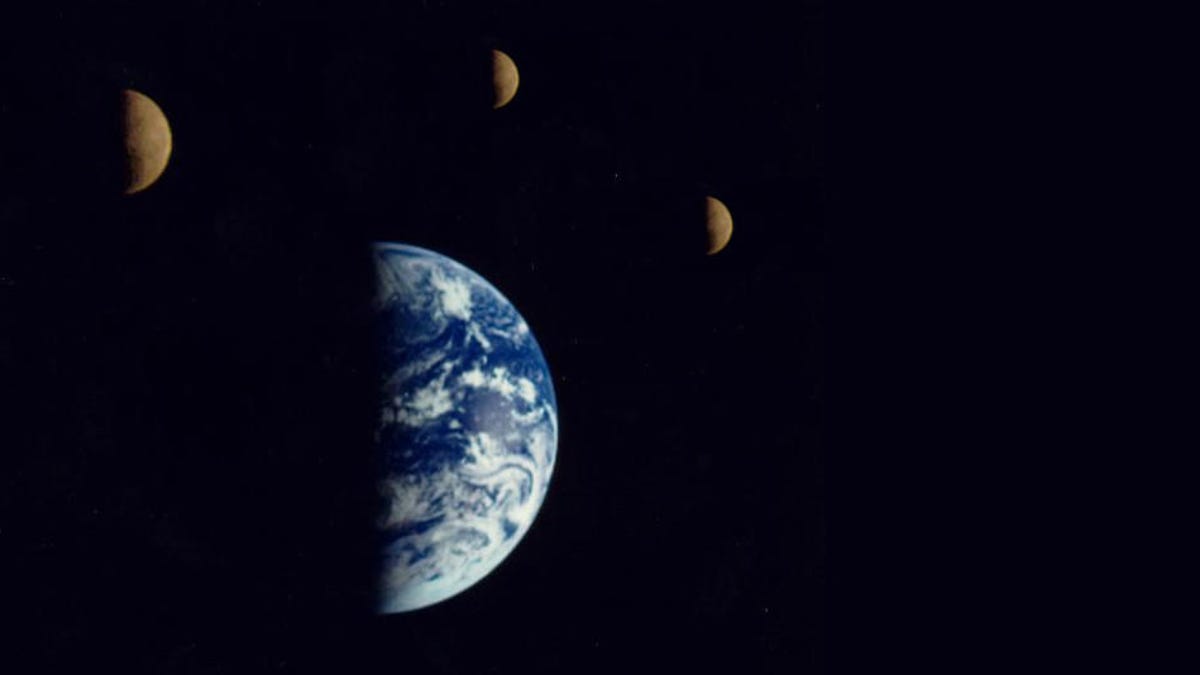Earth has two 'hidden moons', but they aren't moons at all
That's no moons.

Sadly, this isn't what the Galileo spacecraft saw in 1992.
How many moons does the Earth really have?
On Nov. 6, a flurry of publications ran headlines that suggested our moon had two new neighbours. Some of those headlines were restrained, such as Nat Geo's "Earth has two extra, hidden 'moons'" whereas others were a little more fanciful, like The Weather Channel's "The Earth has not one, but three moons".
The revelation stems back to a paper first published in Monthly Notices of the Royal Astronomical Society on Sept. 1. The paper, by a Hungarian team at ELTE Eötvös Loránd University, confirmed the presence of dust clouds first spotted in 1961 by Polish astronomer Kazimierz Kordylewski. The clouds lie along two points of stability between the Earth and the Moon known as L4 and L5. At these points, the gravitational pull of the Earth and the Moon stabilizes the clouds orbit, so they constantly circle the Earth.
The existence of the Kordylewski clouds, named after the astronomer, was doubted for many years and some suspected that the sun's heavy gravitational effect would leave points L4 and L5 empty. That means confirming the existence of the Kordylewski clouds is big news. However, and I know I'm bursting the celestial bubble here, that doesn't mean we found new moons.
Although there is no agreed upon upper and lower limit for a moon's size, the general definition is a celestial body that orbits a planet. The Kordylewski clouds, based on their position in space, would appear to orbit the Earth, but they are also volatile spaces where gravity pulls dust particles in and out of the system, while its shape and density also vary over time, as more particles are pulled into the orbit.
The research team stops short of calling the clouds a moon, instead referring to them as pseudo-satellites.
"It is intriguing to confirm that our planet has dusty pesudo-satellites in orbit alongside our lunar neighbor," Judit Slíz-Balogh, study co-author told the Royal Astronomical Society.
"The Kordylewski clouds are two of the toughest objects to find, and though they are as close to Earth as the Moon are largely overlooked by researchers in astronomy."
Importantly, though the clouds aren't anything quite as paradigm-shattering as extra moons, they are important features of our cosmic neighbourhood. They provide a point in space suitable for us to park spacecraft or telescopes and may even be viable positions to create an "interplanetary superhighway".
It's cool to think about Earth as sort of a reverse-Tatooine, with three moons illuminating the night sky, but that's not quite the case. The dust clouds are incredibly faint -- part of the reason why they remained only hypothetical for so long -- so don't expect to turn your eyes to the sky and see another pseudo-lunar face staring down at you this evening.
To answer the initial question then: The Earth's only moon is the Moon. So let's get ready to go back.
CNET's Holiday Gift Guide: The place to find the best tech gifts for 2018.
Best Black Friday 2018 deals: The best discounts we've found so far.

